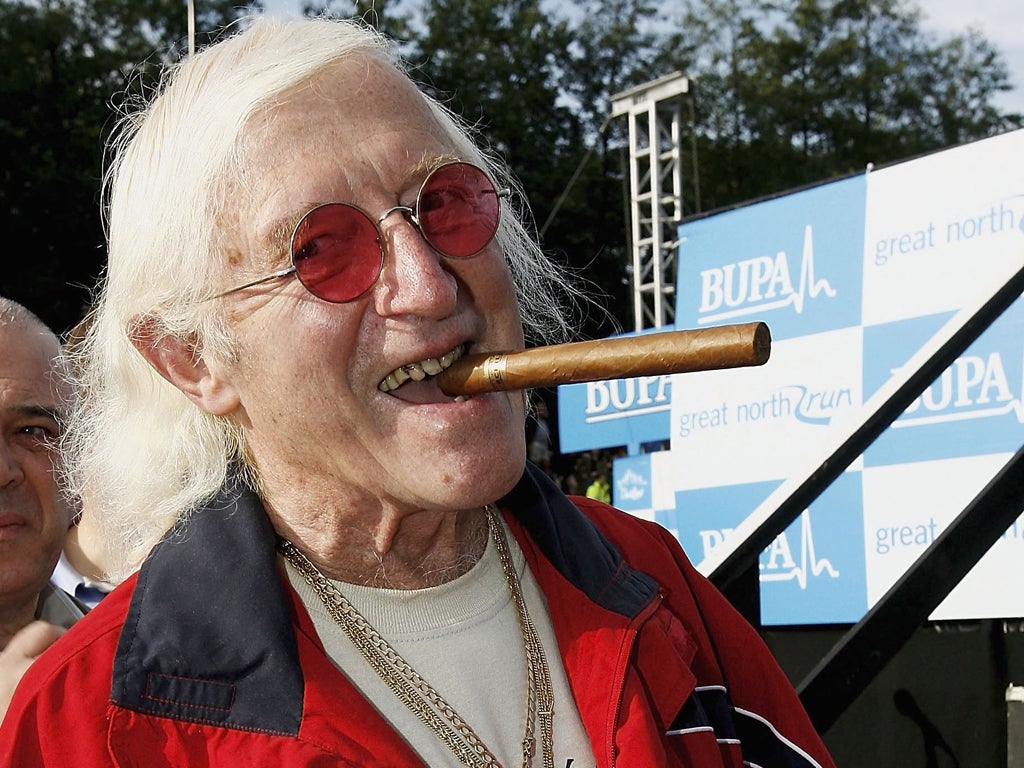The Only Way is Ethics: The Savile scandal shouldn’t be over-simplified
A reader asked last week why we felt it necessary to illustrate each new article with the image of Savile’s face. What, she asked, did we think would be the impact on his victims of having to see those photographs reprinted again and again?


Your support helps us to tell the story
This election is still a dead heat, according to most polls. In a fight with such wafer-thin margins, we need reporters on the ground talking to the people Trump and Harris are courting. Your support allows us to keep sending journalists to the story.
The Independent is trusted by 27 million Americans from across the entire political spectrum every month. Unlike many other quality news outlets, we choose not to lock you out of our reporting and analysis with paywalls. But quality journalism must still be paid for.
Help us keep bring these critical stories to light. Your support makes all the difference.
Last week’s report by Dame Janet Smith into the sexual abuse committed by Jimmy Savile at the BBC revealed an atmosphere in which inappropriate conduct by stars was tolerated. Top “talent” were able to bully those around them so that improper behaviour went unreported – and in a small number of cases, men used the celebrity which their BBC status afforded them to commit appalling crimes against children. It is a very sorry tale.
The particularly remarkable thing about Savile is that he was doing more than just hiding in plain sight – he was an abuser who dared to wear the costume of a paedophile. The weird hair, the bombastic clothes, those mad rings and bangles, the over-sized cigar and range of coloured glasses: if he’d lived round the corner and worked as a school caretaker, your mother would have told you never to speak to him. But because he was on the telly and raised money for charity, the fact that he looked like a child molester could apparently be discounted – which of course is why the BBC cannot but be held morally responsible for his crimes.
Looked at with hindsight, the myriad images of Savile staring at the camera like a kind of gargoyle are both staggering and repulsive. Some of the pictures which have accompanied media coverage of his crimes since the truth finally began to emerge are truly creepy. A reader asked last week why we felt it necessary to illustrate each new article with the image of Savile’s face. What, she asked, did we think would be the impact on his victims of having to see those photographs reprinted again and again?
It’s hard to second guess an answer to that, and different individual victims might not necessarily have the same feelings. There is something in the reader’s question, though, which is why I think it is preferable to avoid pictures which captured Savile at his most creepily grotesque. Not only is that out of regard for those who suffered appalling abuse at his hands, however. It is also because the Savile scandal shouldn’t be over-simplified. Indeed, it is the cultural acceptance of behaviour by men like Savile, both in the BBC but also more widely, especially in the 1970s and 80s, which makes their conduct even more troubling.
To strip the scandal back to a Brothers Grimm-style tale in which the focus is entirely on the monstrous, hideous-looking demon is not only rather facile; it also lets too many people of the hook. Savile was able to abuse with impunity because others preferred to look the other way; he got away with it not because he was a monster but because he was a star.
The truth’s nasty habit of seeming gratuitous
An online article last week reported on the jail sentence handed down to a man convicted of rape. The headline noted that the crime had happened in view of the victim’s toddler son. A reader said this gave the impression that the rape would have been tolerable had it not been carried out in front of a child.
I confess I struggle to see the implication. It should be taken as read that any rape, any sexual assault, is utterly unacceptable. Yet it was an aggravating feature of this case – noted by the judge in her sentencing remarks – that the rape had left two immediate victims. To highlight that in a headline isn’t gratuitous, nor does it underplay the intrinsic horror of any rape. Rather, it helped to explain the key element of our report: that the man had been sent to prison for life.
Join our commenting forum
Join thought-provoking conversations, follow other Independent readers and see their replies
Comments